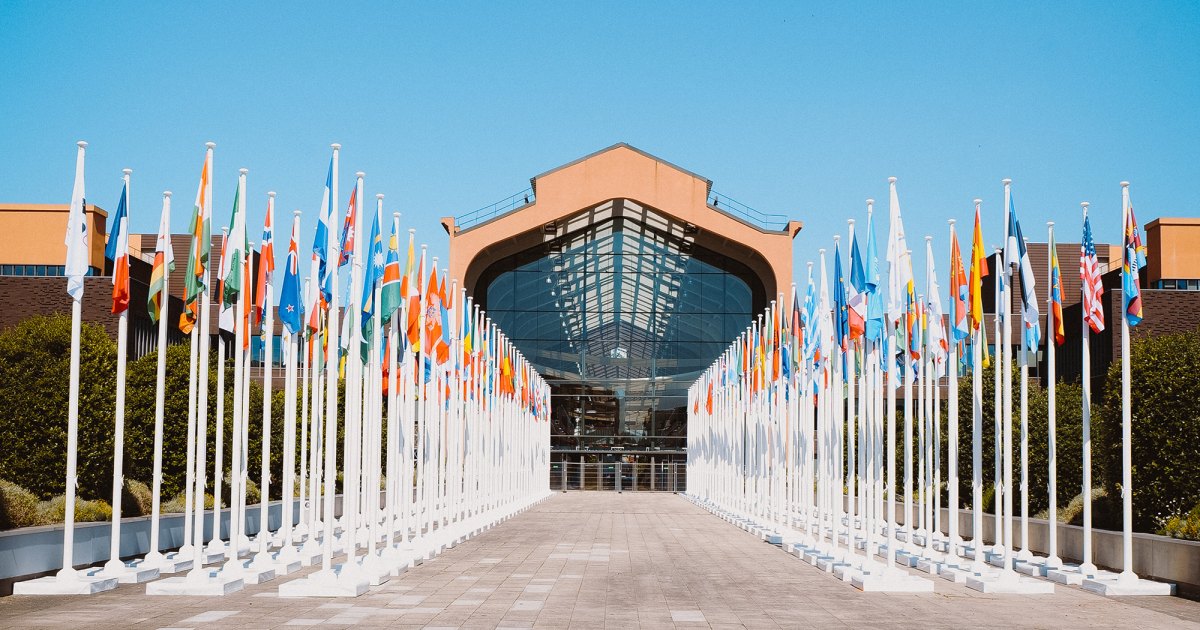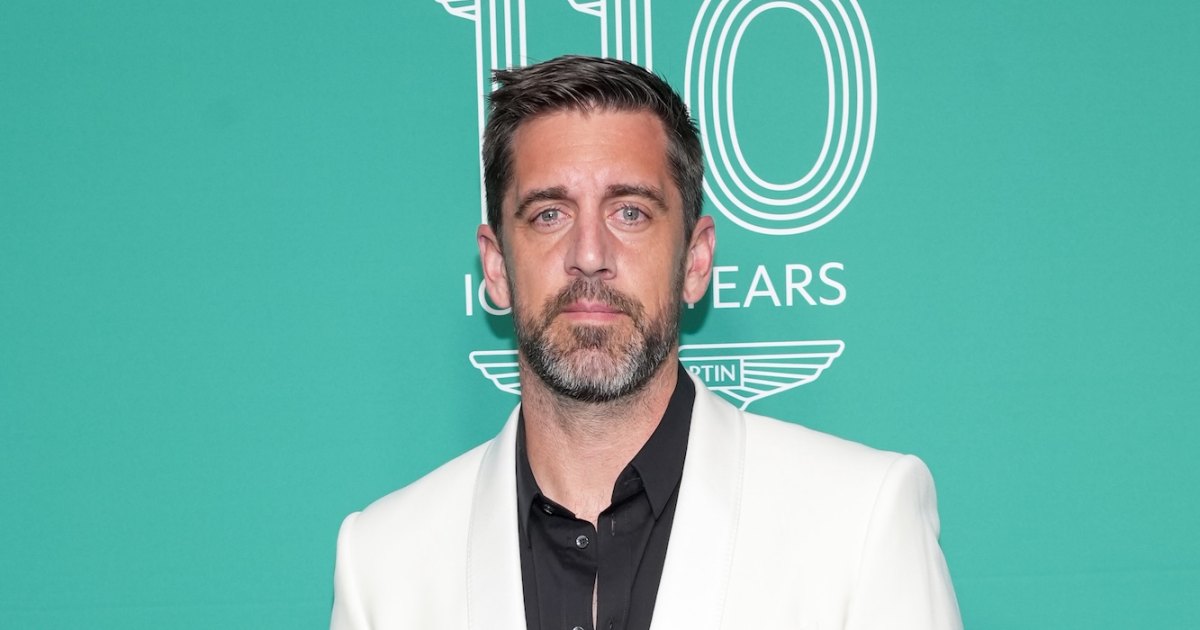From so-called cardboard “anti-sex” beds to a stockpile of three million bananas, what is life really like for the world’s top athletes at the Athletes’ Village in Paris?
The Olympic Games 2024 officially kicks off July 26 with the Opening Ceremonies on the River Seine hosted by Kelly Clarkson, Peyton Manning, and NBC Sports commentator Mike Tirico, plus performances by Celine Dion and Lady Gaga. But nearly 10,000 competitors from across the globe have already descended upon Athletes’ Village near the northern suburb of Saint-Denis, about six miles from the city center. Although there are celebrations throughout the French capital throughout the next two weeks, athletes will be focused primarily on getting their heads in the game.
“To be honest, life in the Athletes’ Village is pretty boring,” confessed former Olympic skier and 2014 silver medalist Gus Kenworthy, 32, to Us Weekly. “The days are not filled with parties by any means! You spend the day working out, stretching, and getting physical therapy. When you’re not doing that, you’re spending your free time watching other events on TV in the common areas.”
Every aspect of life at Athletes’ Village has been carefully — and scientifically — calculated to ensure competitors are at their optimum level of performance. So how will Olympians live ahead of taking the world stage?
Eat Like An Olympian

Nutrition is pivotal to the success of Olympic athletes. This year, Paris 2024 has partnered with Sodexo Live! to bring in a team of international chefs to feed competitors with top-quality food from around the globe. Jeff Leidy, who serves as one of the 25 head chefs in in the Village, pilots a team of 1,000 culinary professionals set to serve around 40,000 meals a day at 15 dining locations across the 52-acre campus, offering everything from snacks and sandwiches to buffets and gourmet options.
“Thanks to the creativity of the Sodexo Live! teams, led by Executive Chef Charles Guilloy, 500 recipes will be offered to athletes throughout their stay at the Village,” Leidy explained to Us Weekly. Athletes will be served performance-promoting dishes including grilled fish, locally-sourced meats, and steam-cooked vegetables, adding, “[Competitors] will have access to no less than 40 different main dishes available each day, including one-third entirely plant-based.”
Sodexo Live!, who will also be handling hospitality for Super Bowl LIX in New Orleans in February 2025, brought in Michelin-starred chefs Amandine Chaignot, Akrame Benallal, and Alexandra Mazzia to serve dishes like quinoa muesli, chickpea pommade, and gnocchi in chicken sauce to “showcase the very best of modern French cuisine,” according to Leidy.
Delivering 2 million total meals over the course of Paris 2024 is no small feat — especially considering there will be no outside restaurants or private chefs in the Athletes’ Village. Catering to the world’s most elite athletes poses an additional challenge. “As a chef, you have to always keep in mind the dynamic of the nutritional needs of the athletes,” continued Chef Leidy who notes that certain athletes want a carb-heavy diet, while others like Simone Biles who may be after lean protein and fiber. All the while, the Sodexo Live! team will be focused on serving a balanced diet tailored to the needs and demands of elite sport.
There are four culinary themes at Athletes’ Village including French , Asian , World (v, and Afro-Caribbean, as well as halal options to make sure competitors from every corner of the globe will feel at home at the dining halls, which serve as a gathering place for athletes competing from all countries and in all events.
“A lot of your time is spent hanging out in the cafeteria with your teammates and people you compete against,” added Gus Kenworthy. “You get to meet athletes from other countries and sports that you normally would never have met, so that part is pretty cool.”
Dining At Paris 2024 By The Numbers
40,000 meals served daily
3 million bananas
27 tons of coffee
80% of the menu sourced from France, with 25% coming from within 15 miles of Paris
⅓ of the food will be made with plant-based ingredients
30% organic ingredients
600-800 baguettes baked daily
Sleep Like An Olympian

While they may not have the grandeur of Marie Antoinette’s gilt Rococo bedframe at the nearby Palace of Versailles, the mattresses at Athletes’ Village were crafted to provide peak performance.
Although they’ve been dubbed the “anti-sex bed” given its firmness and cardboard frame, athletes including British diver Tom Daley, 30, and Irish gymnast Rhys McClenaghan, 25, took to Instagram to demonstrate the bed’s sturdy construction. “As you can see, it’s like a box,” explained Daley. Tapping his knuckles on the headboard before jumping vigorously on the bed, the gold medalist added, “As you can see, they’re pretty sturdy.”
Declaring the “anti-sex” moniker as “fake news,” McGlenaghan offered his own test of strength with belly flops, handstands, and spirited stomping before announcing, “Nope, they passed the test!”
So what makes these breathable, lightweight mattresses perfect for athletes to get their most restorative rest? It comes down to airfiber, a new sleeping technology from airweave, a Japan-based company that has been outfitting athlete’s rooms since the 2008 Beijing Games. Each of the 16,000 modular mattresses supplied to the Athletes’ Village is fully customizable and relies on AI technology to ensure every athlete is getting their optimum firmness and waking up refreshed and ready to go for gold.
Because the sleep needs of a gymnast and a wrestler are certainly different, Paris 2024 relied on airweave’s AI-based MattressFit web app to customize mattresses by analyzing each competitors’ body type. Upon arriving at the Olympic Village, competitors were scanned to optimize their mattress firmness with airfiber blocks that can be arranged for individual support of the shoulders, back, and legs. According to airweave, it has been proven that athletes can achieve deep sleep 300% longer on their airfiber technology than on memory foam. This can be a competitive advantage whether your sport is basketball, boxing, or badminton.
“You spend four years preparing for the Olympics, so you don’t want to risk being tired, sick, or sore,” noted Kenworthy. “Your main priority is trying to get sleep and not stress out before your events, which is tough!”




